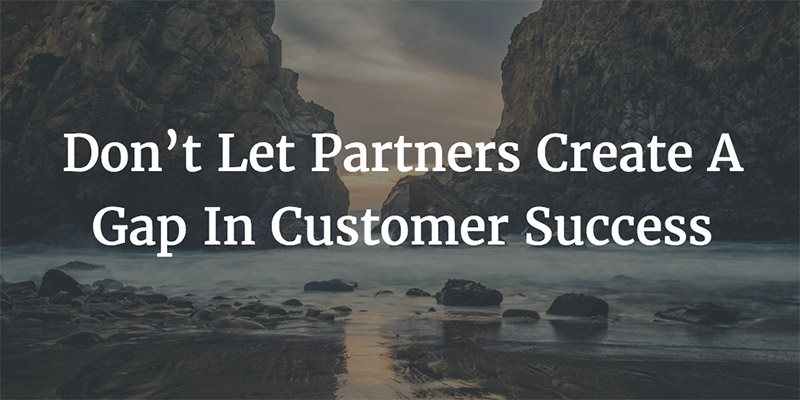If you have a pulse, you’ve heard this question: If a tree falls in the woods and no one is around to hear it, does it still make a sound?
That’s not the question I’m here to answer, but here are some that might similarly give you reason to pause and reflect: Does a SaaS customer sold and supported by a reseller partner achieve its desired outcomes with your product? Does it experience the same time-to-value as the customers you work with directly? Does its status as a customer even register within your Customer Success program?
I left Pulse 2016 asking these questions after attending a session on Customer Success and partner channels that was attended by fewer people than the least popular food truck at lunch.
Why are these important questions to be asking?
For customers who leverage our Allbound software, partner-originated revenue comprises 30%, 60%, or as much as 85% of the company’s top-line revenue. And typically that revenue comes with lower customer acquisition cost and a better holistic ecosystem of support to help drive adoption, retention, and renewal.
But while channel partners can be an effective, growth-oriented go-to-market strategy, success is never a slam dunk. Without proper onboarding, training, resources, and a regular cadence of collaboration, the growth expectations of any channel partner program will fall short. Sound familiar?
In those instances where your partners are reselling, installing, or implementing your solutions, how can you be sure that your meticulously crafted customer journey is going to be followed and maintained? Whether it’s a simple referral program or a more complex reseller or managed services model, your partners become an extension and representation of your brand, company, and product. If they don’t properly understand your offering or don’t have the ability to help accurately educate those prospects who become leads (and ultimately your next customers), you’ll end up spending a lot of time re-educating and resetting expectations with those customers when you do eventually interact with them.
If channel partners are part of your marketing, sales, and delivery revenue roadmap, start aligning them to your customer strategy by following these steps:
Get to know your partners.
Not sure if your company has partners? It probably does, but how can you tell for sure? Start by looking at your company website. Scroll down. Scroll down further. There is probably a simple link that says “Partners” in the mega-footer of the site.
Find out where responsibility for the partner program sits within your organization and then get a list of your current partners. Your partner team probably rolls up to your sales organization; however, in many companies it becomes a pseudo-department that sits in limbo between marketing and sales.
Determine which customers came in from partners and which ones are being supported by partners. Understand the different segments of partners and the various ways their services are bundled to complement your software or platform.
Knowing how your partners leverage your product to create business opportunity for themselves will give you a clearer picture about where Customer Success strategies need to get inserted.
Perform a gap analysis.
Once you’ve got your bearings, get connected to your partners and perform due diligence to find out the common challenges and hurdles they experience when working with prospects and customers on your product. Chances are your knowledge and understanding of the product will be appreciated. That small spark of trust will open up a collaborative dialogue you can leverage to start aligning their customer interactions with yours.
You’ll also find that partners will provide a wealth of information and insight into customers that can inform, clarify, and help refine your current Customer Success practices.
What’s your Partner Success plan?
As you get more familiar with your organization’s partner business, you’ll soon realize that there is something missing from the partner-supplier interactions you observe. It’s Customer Success!
As you guide your traditional customers toward their desired outcomes, understand that similar methods will likewise go a long way toward streamlining the partner journey and experience. Helping keep partners informed and aligned to your product, your go-to-market plans, and your Customer Success strategies will make them a more effective extension of your team. That alignment will create synergy and improved performance that has been out of reach for many partner programs for too long.
An easy next step.
We all look to Gainsight to help us guide our priorities for our Customer Success programs. Many of the Allbound’s Customer Success strategies (and likely yours) started with ideas and best practices they have helped champion for the last several years. If you’re reading this, you now have a chance to get out ahead of the learning curve.
Gainsight’s CEO Nick Mehta is going to be delivering keynote at Co:llaborate in Phoenix in November. Co:llaborate is focused on the changing economics of partnership in the digital and SaaS economy. As part of his presentation, he will be continuing the discussion about Customer Success and channel partners that began this past May with a whisper. I can guarantee that conversation will also continue at Pulse 2017 – much more loudly and to a more eager audience of customer and Partner Success enthusiasts.
Attend Co:llaborate at a discount – register with promo code NICKM_15

